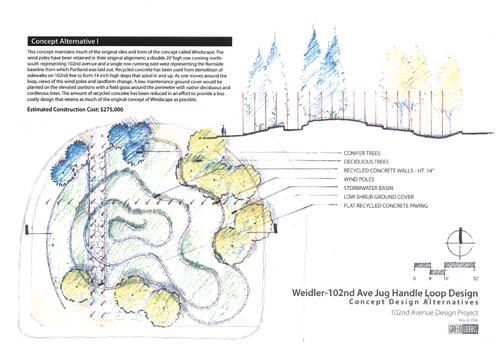 |
||||||||
| MEMO BLOG | Memo Calendar | Memo Pad | Business Memos | Loaves & Fishes | Letters | Home | ||
Parkrose awards scholarships
The Parkrose Business Association, which works hard on its Cruise-In fundraiser, last month was introduced to the payoff - a group of young ladies, seniors at Parkrose High School, who will receive $1,000 scholarships.
The winners this year were Angelyn Bilbrew, Kelli Herman, Sarah Lange and Yuliya Mikhiylov. Bilbrew, who works as a hostess at Elmer's Restaurant, will attend Mt. Hood Community College and hopes to become an elementary school teacher. Herman, who works at the Cascade Athletic Club, will attend the University of Oregon, where she plans to major in psychology. Lange's activities include senior class president, the soccer and track teams, and a job at Curves. She will attend George Fox University, "which is not exactly a cheap school," so the scholarship will be most welcome, she said. Mikhiylov hopes to operate a small business eventually.
Alison Stoll, director of Central Northeast Neighbors and a member of the scholarship committee, said, "We had 22 applicants, and they were all great kids. It was really hard to choose."
Major sponsors who made cash or in-kind contributions to the cause were Rex Heating and Air Conditioning, West Coast Bank, Bank of America, Parkrose Hardware, Rossi Farms, Cascade Sports Car Club, Battle Ground Auto Wrecking, Industrial Power Service, American Sani-Can, A Cut Above Hauling, and Farmers Insurance.
Hospital funding secure
Amid the bad news about the independent Physicians Hospital - allegations of malpractice, rumors of closure - there is one small bit of positive news: public funding appears safe. Sarah King of the Portland Development Commission said her agency gave a $500,000 loan to the doctor-owned enterprise at the former Woodland Park Hospital, 10300 N.E. Hancock St., and that the Physicians' principal partners as well as the corporation insure the loan. "So far, the payments are current," she said.
David Douglas High plans expansion
David Douglas High School, the largest such public school in the state, at 2,700 students and growing, is planning to build a new addition.
Representatives Courtney Wilton and Terry Rommel told the Hazelwood Neighborhood Association last month that the district plans to add a two-story, 30,000-square-foot addition on the site of some existing tennis courts. The new building will house 20 new classrooms, Wilton said. The courts, which are "so dilapidated that other schools won't play on them," will be replaced near the gym.
The district will provide landscaped screening between the new building, the school parking lot, and adjacent residences "so that they don't feel overwhelmed," Wilton said. The improvements will require a Conditional Use permit from the city as school additions in residential zones usually do. Referring to other recent Hazelwood land use issues, Wilton said, "The good news is we won't be asking for a zone change." He also said that the $5 million project would be paid for out of the district's internal budget.
"Can I have a raise?" Rommel asked facetiously.
"No," Wilton replied. "How do you suppose we can afford this?"
Some Hazelwood board members cautioned the representatives to keep safety in mind in designing the addition. "It's an issue we're sensitive to," Rommel replied. "We don't want this to be a haven for muggers."
Hazelwood Chair Arlene Kimura said, "I'm very pleased to work with David Douglas. I appreciate that you always come to us early."
Downsized jug handle art selected
Dan Layden, project manager of the 102nd Avenue Project, told the Memo last month that the city has selected new artwork for the Northeast Weidler Street "jug handle." Please see a graphic design of the jug handle traffic loop in this issue on page 10.
The new art concept is a modified version of a previous one proposed for the traffic island. Like its predecessor, it will include a sculpted platform made from concrete recycled from other parts of the project, and thin plastic tubes that will bind in the wind. It will also include some deciduous and conifer trees.
At $275,000 the new concept is the most expensive of three considered by the city, but also has the lowest maintenance costs. The original plan would have cost $500,000.
The 102nd Avenue Plan will convert the street to a boulevard between Northeast Halsey and Southeast Stark streets. The street will have four lanes of traffic, a bike lane in each direction, a center turn lane interrupted by pedestrian refugees at strategic locations, new street trees and other pedestrian amenities. Sidewalks along the street will be widened in concert with private property redevelopment as it occurs. Due to a budget shortfall caused by inflation in the price of building materials, the project will be built in phases, starting at the north end.
 |
| Submitted Graphic |
|
|||||
|
MEMO Advertising | MEMO Archives | MEMO Web Neighbors | MEMO Staff | Home |


